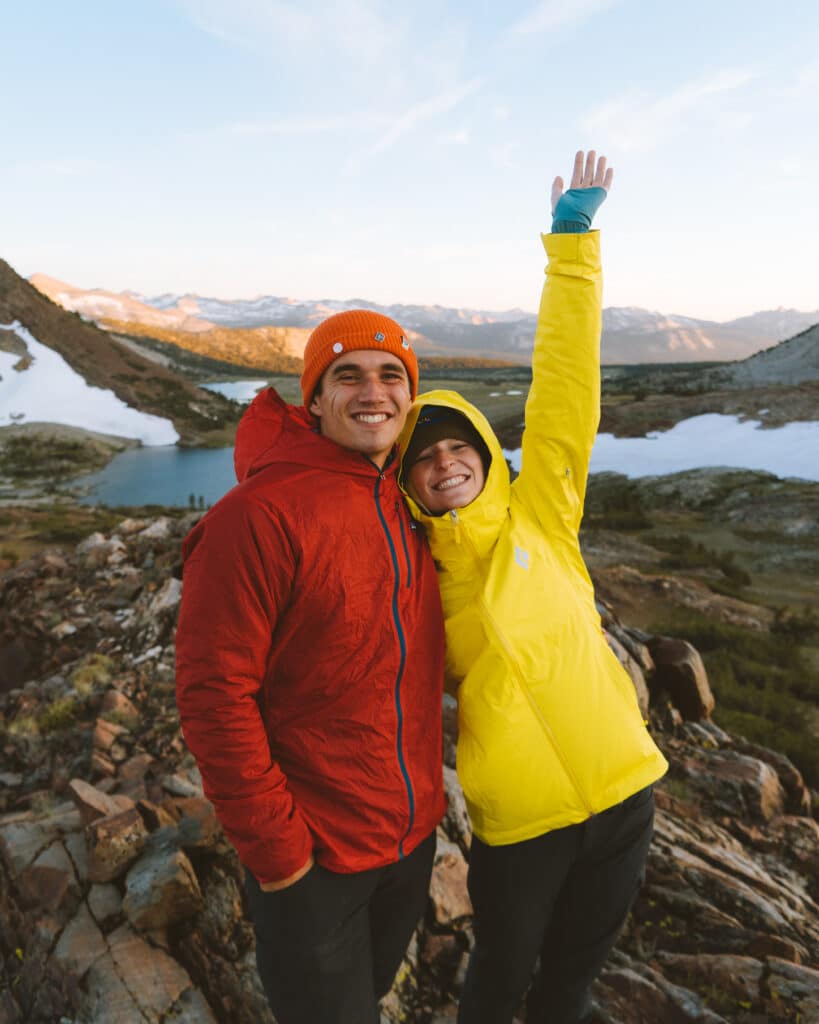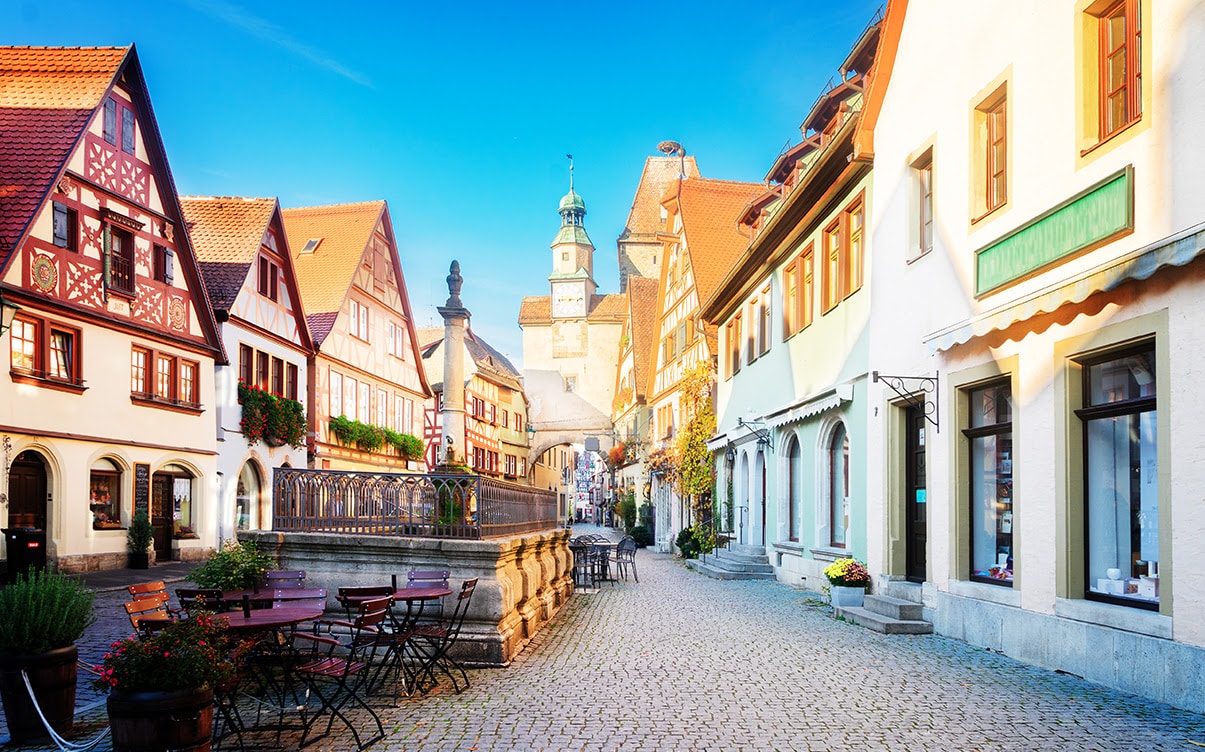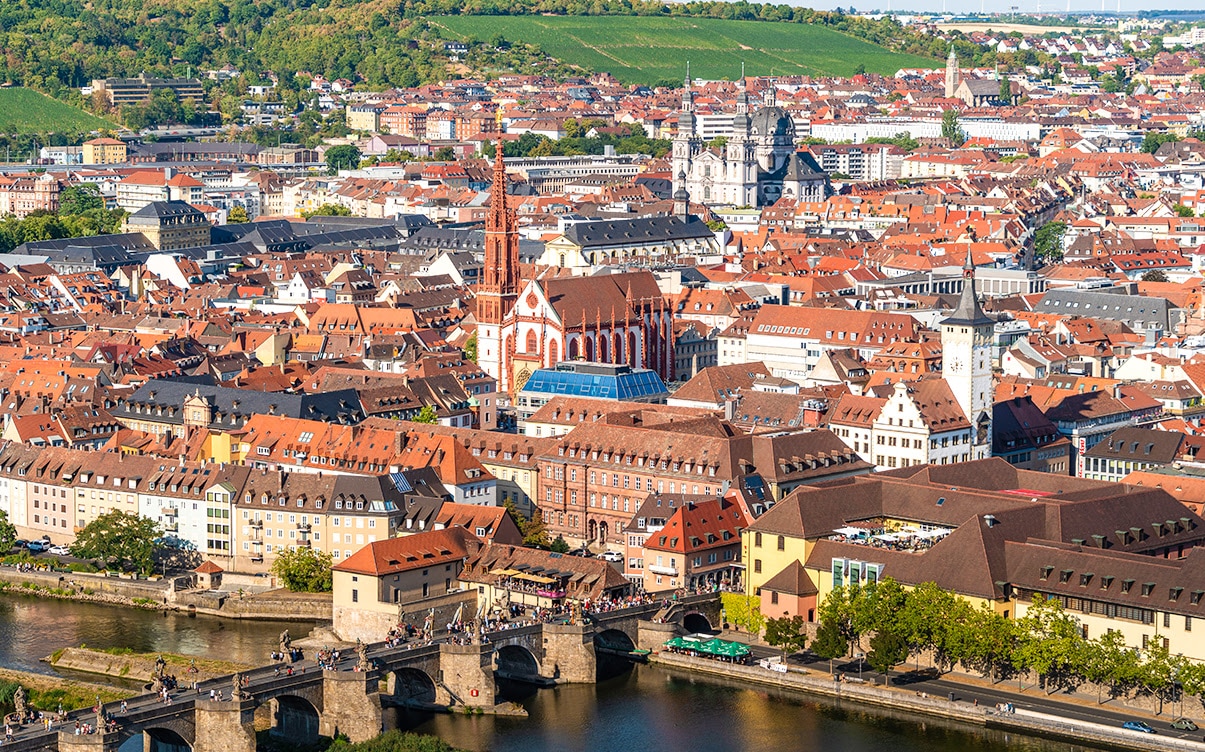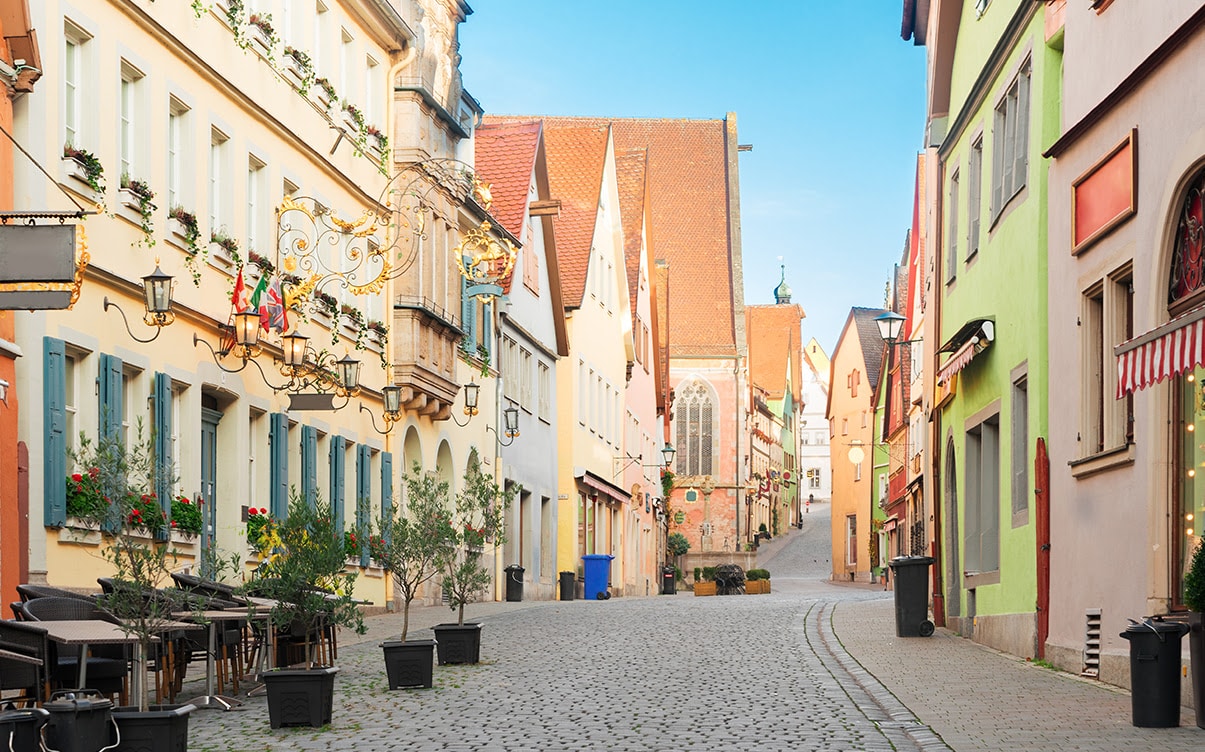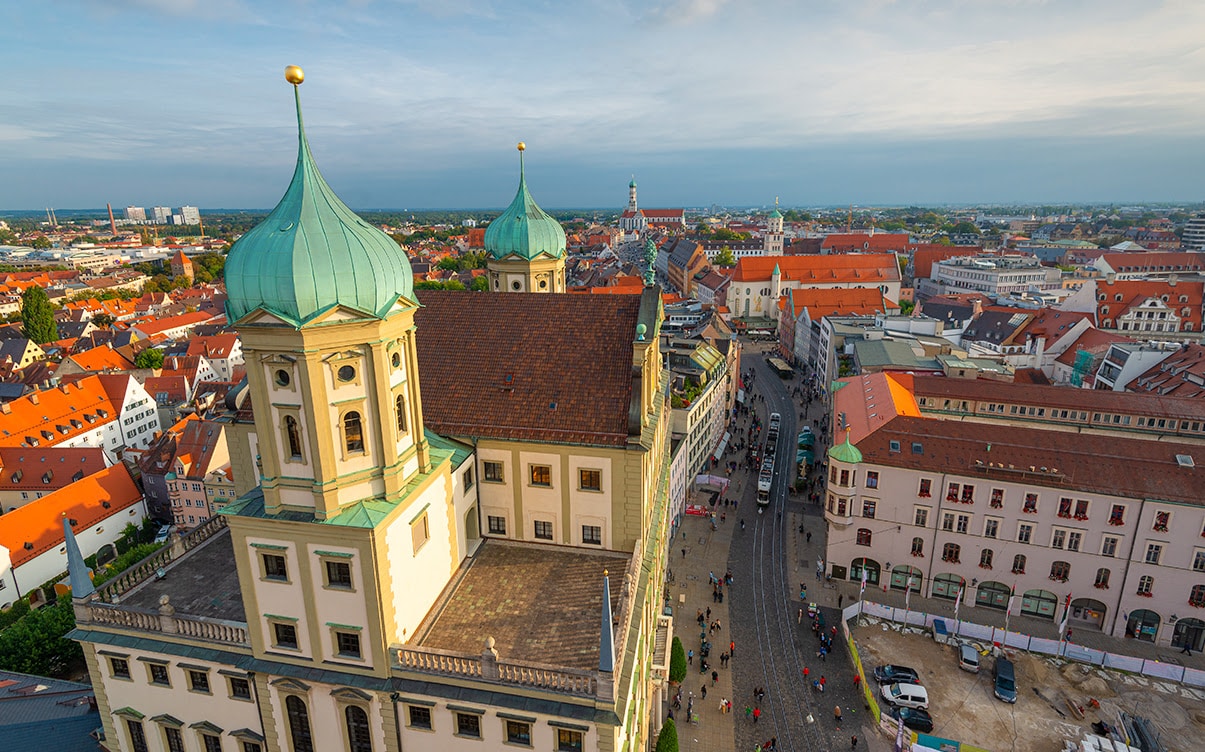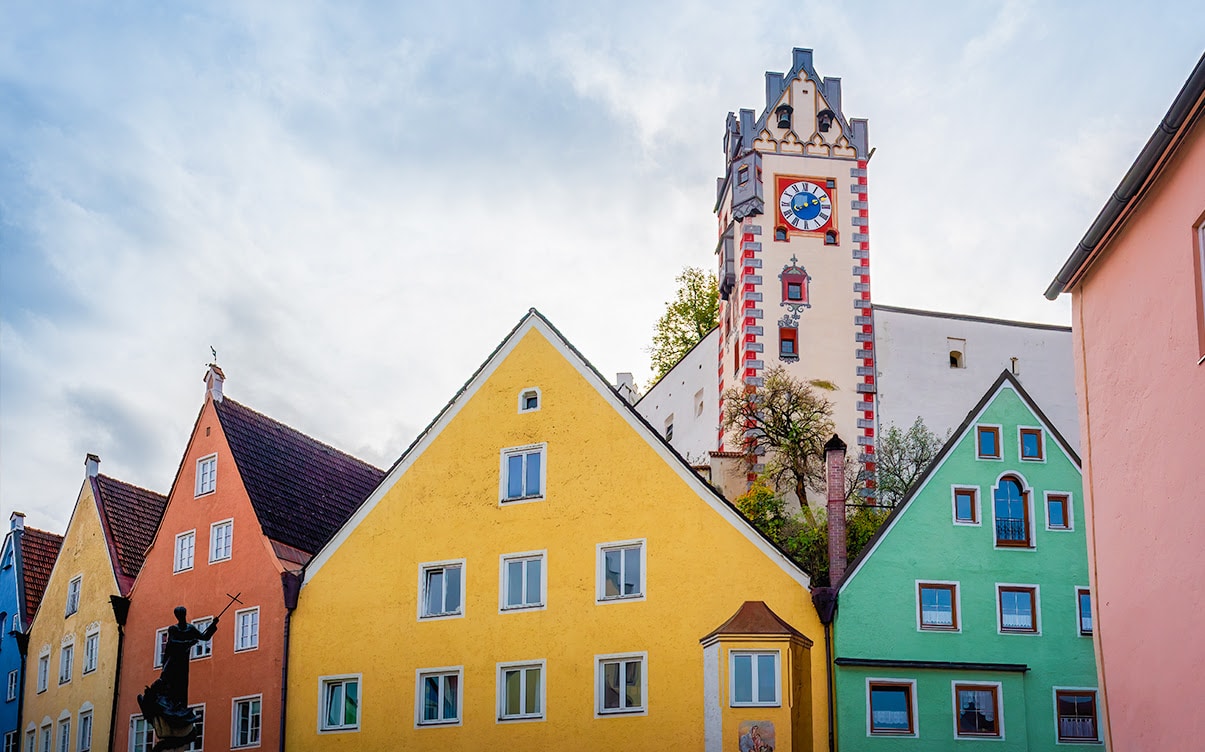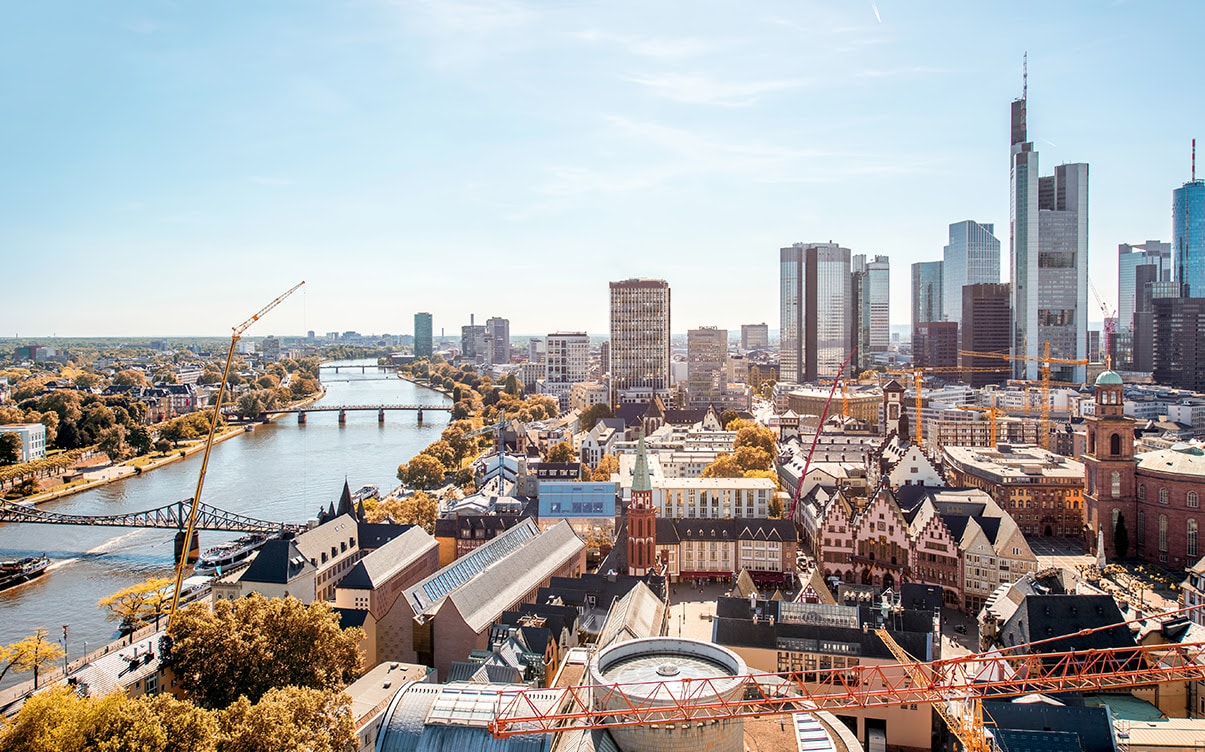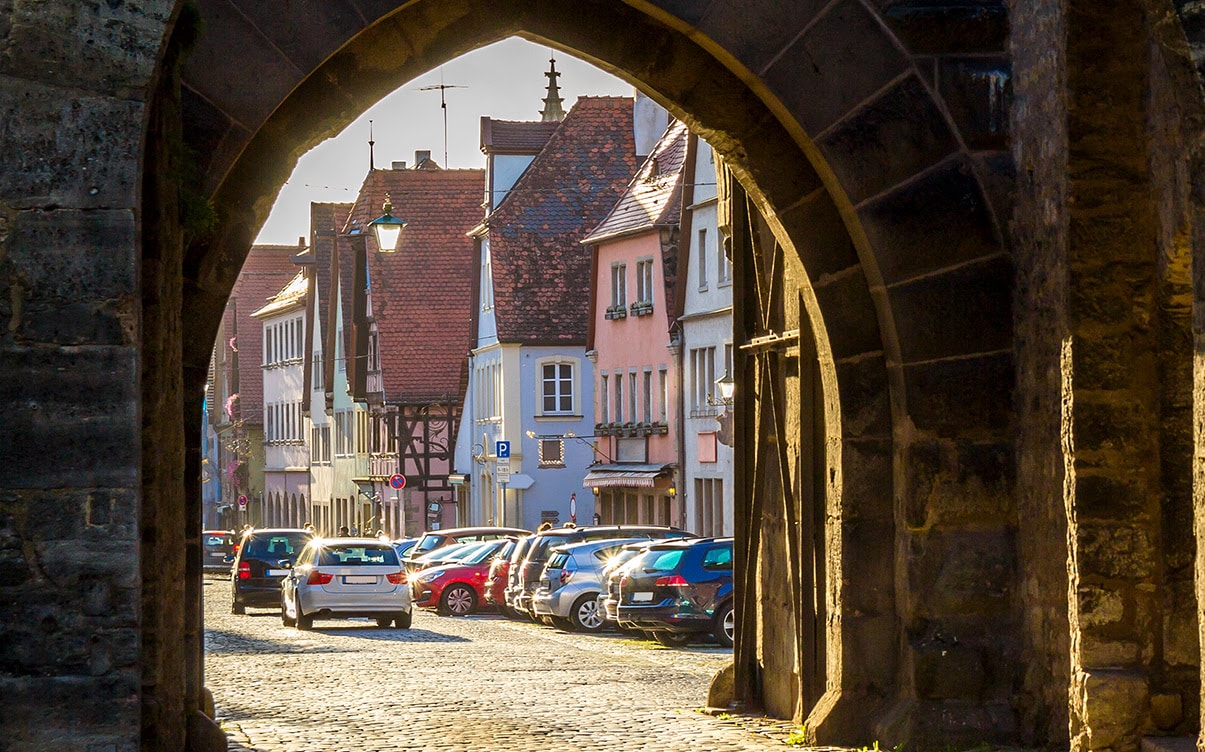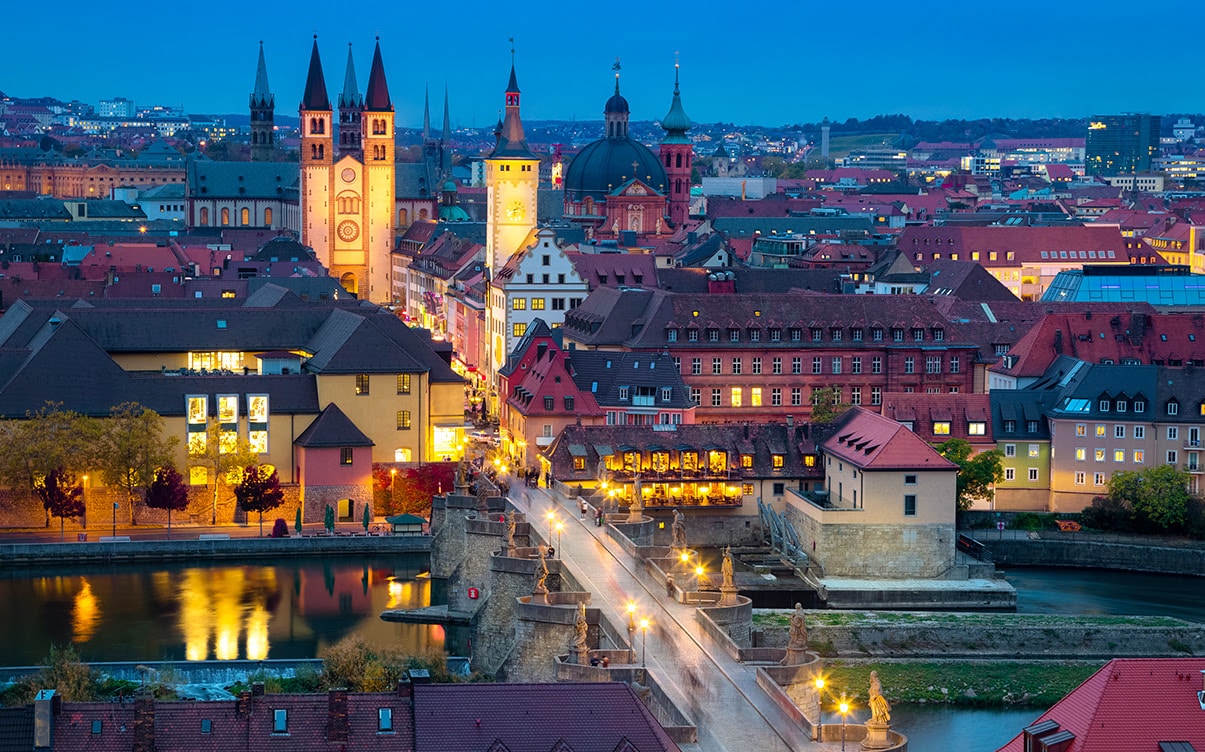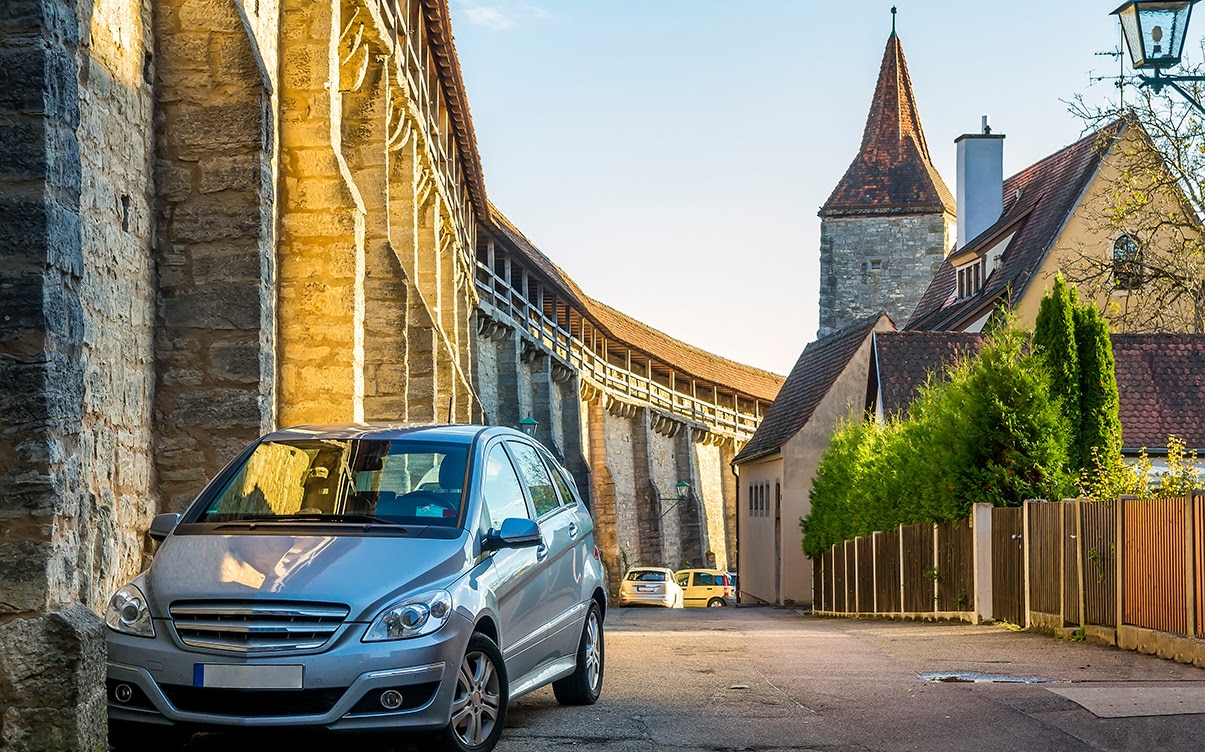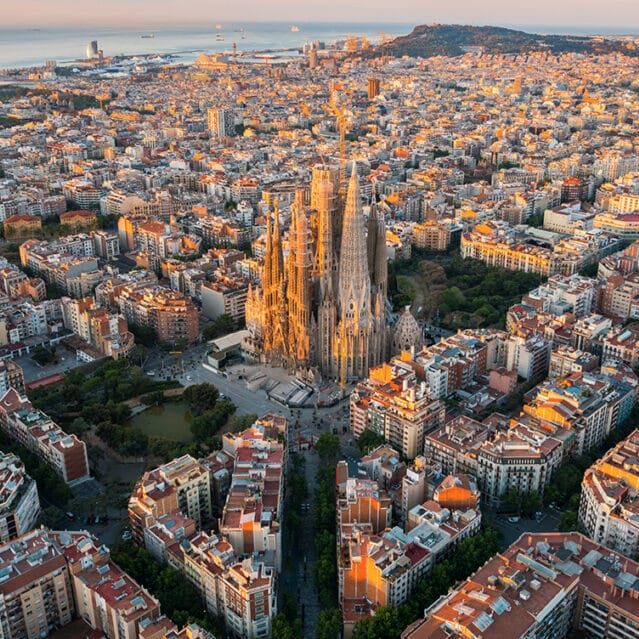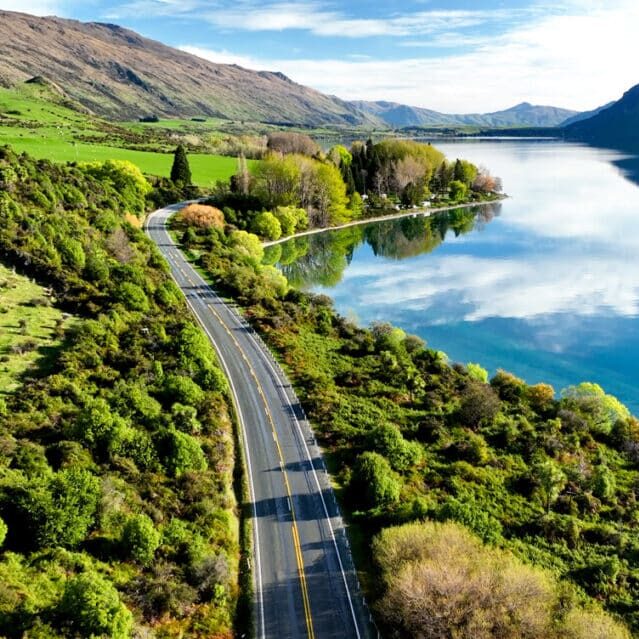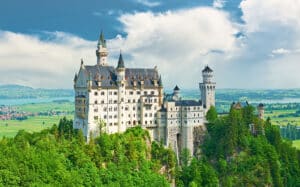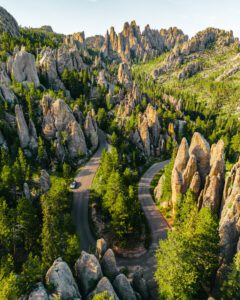Drive Germany’s Romantic Road: Castles and Countryside
Disclaimer: This post may contain affiliate links. Please see our Disclosure Policy and Advertiser Disclosure for details.
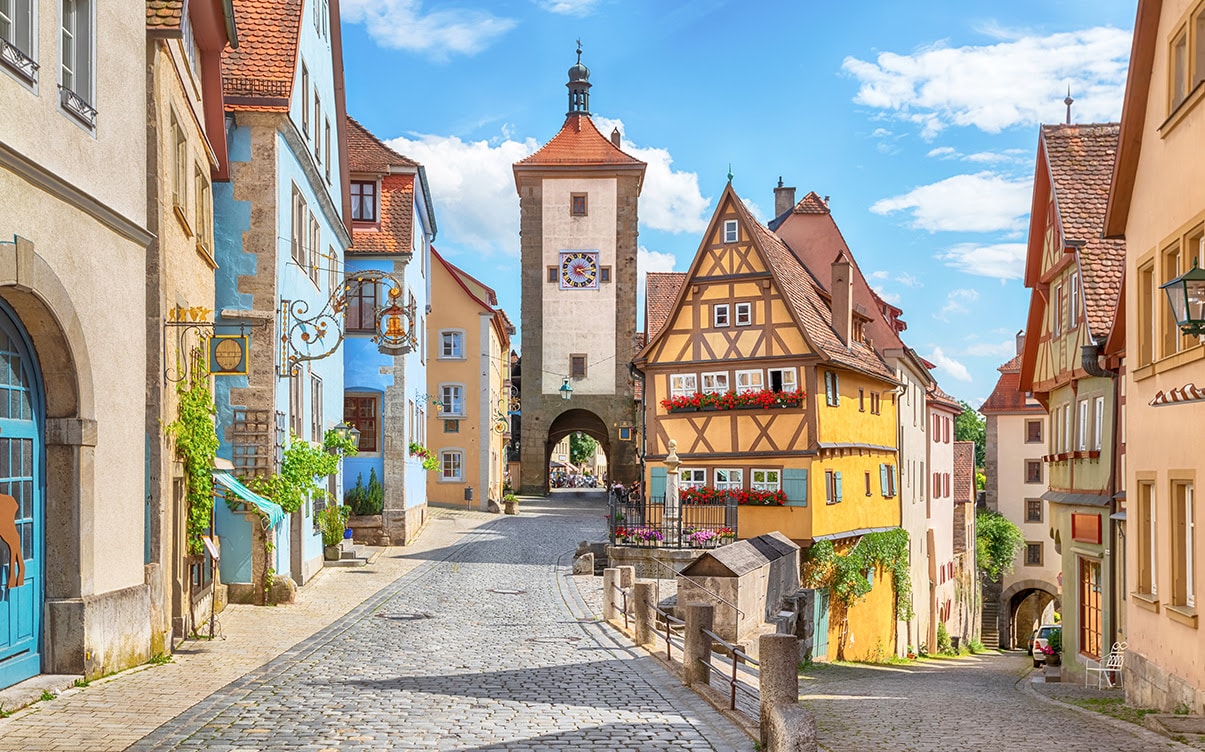
One of the nice things about modern society is that we’ve built roads, and we travel those roads using vehicles capable of covering more ground in a day than people could in weeks or months before. It’s an incredible opportunity modern people have to see sights that would have been once-in-a-lifetime trips over the course of a few days or a week.
We love a good road trip. Maybe not as much as we love going backcountry camping or spending time on a tropical beach, but they’re still up there in terms of adventures we enjoy. So, whether it’s on the West Coast, East Coast, or countries as far away as Iceland, we’re always keen to see what we can do with a car full of supplies and a dream.
One of the more famous roads you can travel isn’t in the United States; it’s in Europe. It’s called the Romantic Road in Germany, and it’s incredible.
Where is the Romantic Road? How do you travel it, and what can you see along the way? If you want a road trip along Germany’s Romantic Road, you’ve come to the right place. Let’s talk all about it.
What and Where is Germany’s Romantic Road?
What do you think of when you hear the name Romantic Road? At first blush, it sounds like something narrow, idyllic, winding through the countryside, with sights to see and things to do all along the way.
Germany’s Romantic Road is sort of like that, but also sort of not. Some of it is narrow streets through historic, ancient German hamlets and small villages. Some of it is arrow-straight kilometers of road between fields, nearly indistinguishable from what you might see in Kansas save for the license plates. And sometimes, you pass through a tunnel directly underneath a castle.
Overall, the Romantic Road is a hair over 350 kilometers or about 220 miles of highway. Throughout this span, it encompasses everything from rural highways to rustic villages to tourist towns, and there’s a ton to see and do along the way.
The road is famous enough that it has both its own Wikipedia page and its own tourism website (in German, of course.)
The history of the road is fairly interesting. It’s a theme route, a tourist road designated as much by travel agents as the country itself. The technical start of the road is in Wurzburg, a small city about midway between Frankfurt and Nuremberg. From there, it winds its way south until it eventually reaches the town of Fussen, on the border with Austria.
The Romantic Road is also not so much a road as it is a route. You don’t get on one road and follow it to its end; instead, you follow a route from place to place, following highways B2, B8, B16, B17, B25, and B290 along the way. Don’t worry; if you want a map, plenty are available.
Fun fact: a similar tourist route, also called a Romantic Road, exists in Japan. In fact, in 1988, the associations managing both routes signed a pact to call them sister roads. Visitors to Germany’s Romantic Road will see a lot of bilingual signage in Japanese and vice versa to help tourists who want to see both.
What can you do along the Romantic Road? Let’s follow it from start to finish and talk about your options.
At the Start: Wurzburg
As we already mentioned, the start of the Romantic Road is in Wurzburg, Germany, a town of about 125,000 people centered around a university. It’s a very baroque and classical village, with exactly the kind of Bavarian architecture you picture when you think of the term.
One of the key places to visit in Wurzburg is the Wurzburg Residence. It’s an incredible palace and a UNESCO World Heritage Site, and with good reason. With immaculate formal gardens, an ostentatious interior, and art that has stood the test of time, it’s the first must-see location along your route, and you haven’t even gotten started!
There’s plenty more to do in Wurzburg if you have the time and inclination to explore. They have a fantastic bridge to walk, plenty of old-style architecture to enjoy, and some incredible wine, if that’s your thing. It’s great to get you in the mood for your trip, and if you spend your first night in the city, you wake up refreshed and ready to go for the first leg of your journey.
First Major Stop: Rothenburg
The first major stopping point along the route – and often the first place people spend the night along the Romantic Road route – is Rothenburg ob der Tauber. Before you get there, though, you pass through a variety of smaller towns and villages. Some of these are blink-and-you-miss-it small, while others have a little more to them, and you can certainly find the charm in any of them if you stop for a bit.
So, as you pass through Holzkirchen, Urphar, Wertheim, Tauberbischofsheim, Lauda-Königshofen, Bad Mergentheim, Weikersheim, Rottingen, and Creglingen, consider whether or not you want to stop and stretch your legs.
- Wertheim is a great place to stop for a few hours, as it has one of the first major castles you’ll see along your route. It’s not the biggest or most impressive of the castles, but it’s worth a stop if you’re a castle fanatic.
- Despite the name, Bad Mergentheim isn’t bad at all; in fact, it’s an officially recognized spa town and can be a wonderful place to spend an evening if you’re taking your trip slowly and casually.
Rothenburg is a walled town, and it’s broadly known as one of the best-preserved medieval towns in all of Germany. Walking down the cobbled streets, you can really feel the history, though, of course, there are some allowances for modernity throughout.
The only downside to Rothenburg is that it’s a very tourist-focused town these days, so if you’re only stopping during the day, it can feel almost artificial. If you’re able to take your trip very leisurely and spend the night in Rothenburg, it clears out overnight and has an entirely different vibe, which we feel is a lot more authentic.
Continuing On to Augsburg
Once you leave Rothenburg, there are more small towns to pass through on your way to your next major destination. You can pass through Schillingsfurst, wave at Feuchtwangen, and stop in Dinkelsbuhl for a meal. Dinkelsbuhl is also the home to the Summer Breeze Open Air heavy metal festival if you happen to visit when it’s going on. From there, you go through Wallerstein, where you can visit the small and unassuming Wallerstein Castle if you’re inclined.
The one major stop most people make at this point is a visit to Nordlingen. Nordlingen is an ancient town with a history stretching back at least to the year 898 (yes, three digits) and a potential history stretching back even further.
Anyone interested in geology can take note: an ancient meteorite impacted near Nordlinger, forming the Nordlinger Ries crater and creating a huge amount of impact diamonds in the rock. That rock was later quarried and used in buildings, so the buildings in Nordlinger are full of sparkling bits of diamond.
After Nordlinger comes Harburg, which is another great stopping point for anyone with an interest in castles. Harburg is home to Harburg Castle, standing tall on a crag over top of the town, where it’s open from March to November for tourism visits.
After that, you pass through Donauworth before finally arriving at Augsburg. Augsburg is another university town with a thriving population and a ton of stunning architecture, including the iconic cathedral, the Maximilian Museum, and the town hall, which is nearly a castle in its own right. Fans of the UNESCO list will also find that the water management system is designated a World Heritage Site because of the ancient canals and hydraulic engineering it represented.
Finishing the Trip to Fussen
The final leg of the journey has you pass through another variety of small and mid-sized villages before finally reaching the star of the show, but we’ll get to that.
Shortly after leaving Augsburg, you end up in Friedberg, along the river Lech. This town existed initially basically to collect a toll for crossing the river, but of course, it has done a lot more over the centuries. After that, you pass through Kaufering and can stop to see the weirs of Landsberg am Lech. Whether or not you explore the town depends on your love of history; it was a site where Hitler was incarcerated and later became the site of a concentration camp as well.
From there, you pass Hohenfurch, go through Schongau, and see Peiting along the rough. All of this essentially follows the path of the river Lech, and you can see how that river influenced the development of the country in the history of these towns. Rottenbuch is another potential stopping point, a home to monasteries and ascetic living, or just another town to pass through. Wildsteig continues the trend, and you’re already near the end.
Another UNESCO stop, if you want, comes up in Steingaden, where the Wies Church is designated a World Heritage Site. Halblech is just after it, and then you reach the collective area of Schwanau, Neuschwanstein, and Hohenschwangau.
Neuschwanstein, in particular, is the gem of this whole trip, where the Neuschwanstein Castle can be found. This stunning castle is an incredible sight to behold, and the entire surrounding area is packed with awesome sights to see. Trust us; there’s a reason we recommend ending your trip on this high note.
Of course, there’s not just one castle in the area; Hohenschwangau Castle is also there, an often-overlooked castle that is just as charming if you pay it a visit. And finally, you arrive in Fussen, and your trip is complete.
Additional Details on the Romantic Road in Germany
To wrap things up, let’s cover some of the details we left out or missed along the way. If you have any additional questions, feel free to ask in the comments!
How do you get to the Romantic Road?
Most people start their trip by flying into Germany, usually to Frankfurt, which is the closest big city to the start.
Wurzburg doesn’t have an international airport, just small airports for small and private planes, so you’ll either want to rent a car in Frankfurt and drive in or take a train into Wurzburg and rent a car from there. Both get you to Wurzburg and get you started with your trip.
How long should you take driving the Romantic Road?
This is up to you. If you just want to hit a few sights along the way and spend no more than a couple of hours at each stop, you can do the full road in about three days.
We generally recommend taking it slower and spending more time seeing the sights in the major towns along the way, as well as even scheduling some flexible time to go off the main road and explore nearby attractions.
Should you go from Wurzburg to Fussen or Fussen to Wurzburg?
Or, in other words, should you go north to south or south to north? Unless you’re really pressed for time and you’re not sure you’re going to be able to do the full route, we highly recommend starting in the north and heading south.
As you saw from the outline above, one of the best attractions in Germany, Neuschwanstein Castle, is at the end of the trip, so you save the best for last. So, unless you’re risking not being able to see it at all, save it for the end to round out a perfect trip.
What to do when you’re done with the trip?
At this point, you have plenty of options.
You can turn around and make the drive back, stopping at places you skipped the first time through. You can take the road a little further and head to Munich, the most common departure point for those heading out of Germany after their trip is done. Or you could even continue south into Austria and keep your historic tour going. It’s entirely up to you!
You may also enjoy:
